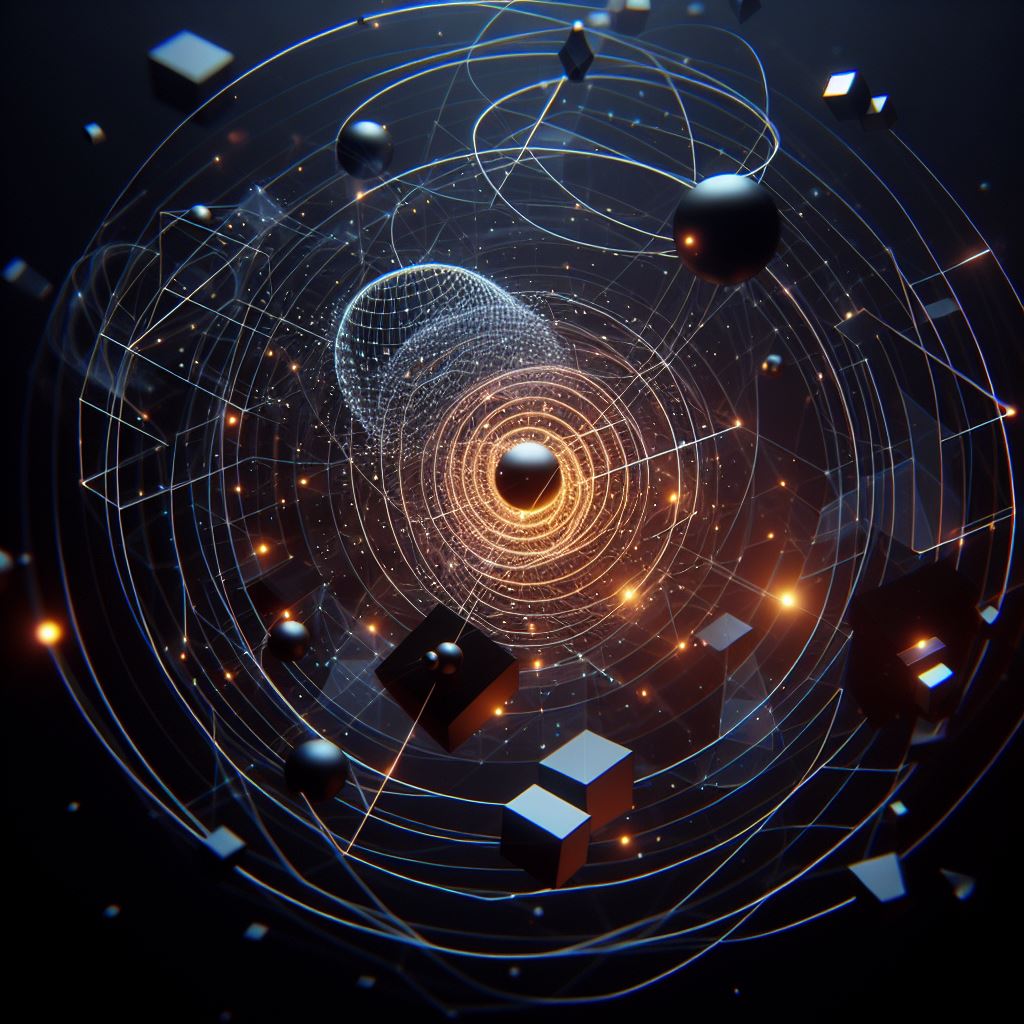In the vast expanse of the cosmos, beyond the glittering tapestry of stars and galaxies, lie the shadows of two profound mysteries – dark matter and dark energy. These enigmatic forces, though invisible to the human eye, exert a profound influence on the universe’s evolution. Embark with us on a voyage through the cosmic unknown as we unravel the secrets of dark matter and dark energy, illuminating their significance and the ongoing quest to decipher their nature.
Understanding Dark Matter and Dark Energy
At the heart of this cosmic enigma lies dark matter, a mysterious substance that comprises approximately 27% of the universe’s mass-energy content. Unlike the familiar matter that forms stars, planets, and galaxies, dark matter does not interact with electromagnetic radiation, rendering it invisible to traditional observation methods. Its presence, however, is inferred through its gravitational effects on visible matter.
To visualize the role of dark matter, envision the universe as a grand celestial ballet. Galaxies, like dancers on a cosmic stage, pirouette gracefully through space, guided by the unseen hand of dark matter. While ordinary matter provides the dazzling spectacle, dark matter quietly orchestrates the performance, shaping the cosmic choreography with its gravitational embrace.
Scientists have proposed various hypotheses to unravel the nature of dark matter, from Weakly Interacting Massive Particles (WIMPs) to axions and sterile neutrinos. Yet, despite decades of research and numerous experiments, the elusive particles of dark matter remain beyond the reach of detection, leaving astronomers to peer into the cosmic abyss in search of answers.
Unraveling the Enigma of Dark Energy
But the cosmic mysteries do not end with dark matter; they extend to an even more confounding force – dark energy. Discovered in the late 20th century, dark energy permeates the fabric of space itself, driving the accelerated expansion of the universe. Unlike dark matter, which acts as a cosmic glue binding galaxies together, dark energy exerts a repulsive force, pushing galaxies apart and stretching the very fabric of spacetime.
To grasp the concept of dark energy, envision the universe as a vast cosmic balloon. Dark energy, akin to an invisible hand, inflates the balloon from within, causing it to expand at an ever-accelerating rate. As galaxies recede from each other, the cosmic balloon expands, carrying celestial bodies farther apart and leading to the gradual cooling of the cosmos.
The discovery of dark energy sent shockwaves through the scientific community, challenging existing models of cosmology and prompting a reevaluation of our understanding of the universe’s fate. Its mysterious nature, coupled with its profound implications for cosmic evolution, has sparked a global quest to unravel its secrets and unlock the mysteries of the cosmos.
The Quest for Answers
As humanity peers into the depths of space with increasingly powerful telescopes and sophisticated instruments, the quest to unravel the mysteries of dark matter and dark energy continues unabated. From underground laboratories to space-based observatories, scientists deploy an array of cutting-edge technologies in pursuit of elusive particles and elusive clues.
But the journey is fraught with challenges and uncertainties. Despite decades of research and numerous experiments, the elusive particles of dark matter remain beyond the grasp of detection, leaving astronomers with more questions than answers. Similarly, the nature of dark energy continues to elude comprehension, prompting scientists to explore alternative theories and novel approaches to understanding its enigmatic properties.
Yet, amidst the uncertainties and challenges, the quest to unravel the mysteries of dark matter and dark energy serves as a testament to humanity’s insatiable curiosity and unyielding spirit of exploration. With each new discovery comes a deeper appreciation of the universe’s complexity and a renewed sense of wonder at the vastness of creation.
Unlocking the Cosmic Mysteries
In the cosmic tapestry of stars and galaxies, dark matter and dark energy stand as silent sentinels, guarding the secrets of the universe’s evolution. By unraveling their mysteries, scientists hope to unlock the key to understanding the fundamental forces that govern the cosmos and illuminate the path to new discoveries and insights.
From the formation of galaxies to the ultimate fate of the universe, dark matter and dark energy play a central role in shaping cosmic structure and determining the destiny of the cosmos. As scientists continue to push the boundaries of knowledge and explore the depths of space, they embark on a journey of discovery that transcends the boundaries of space and time, guiding humanity ever closer to the heart of the cosmic enigma.
The Cosmic Implications
The mysteries of dark matter and dark energy not only challenge our understanding of the universe but also carry profound implications for the future of cosmology and astrophysics. By unraveling their secrets, scientists hope to shed light on fundamental questions about the nature of space, time, and the cosmos itself.
From the origins of the universe to its ultimate fate, dark matter and dark energy hold the key to unlocking some of the deepest mysteries of existence. Whether through groundbreaking discoveries or revolutionary new theories, the quest to understand these enigmatic forces will shape the course of scientific inquiry for generations to come.
Conclusion
In the vast expanse of the cosmos, dark matter and dark energy stand as cosmic enigmas, challenging our understanding of the universe and inspiring awe and wonder in equal measure. As we continue our journey of exploration and discovery, we are reminded of the boundless mysteries that await us in the depths of space and the enduring human spirit that drives us to seek answers to the most profound questions of existence.
